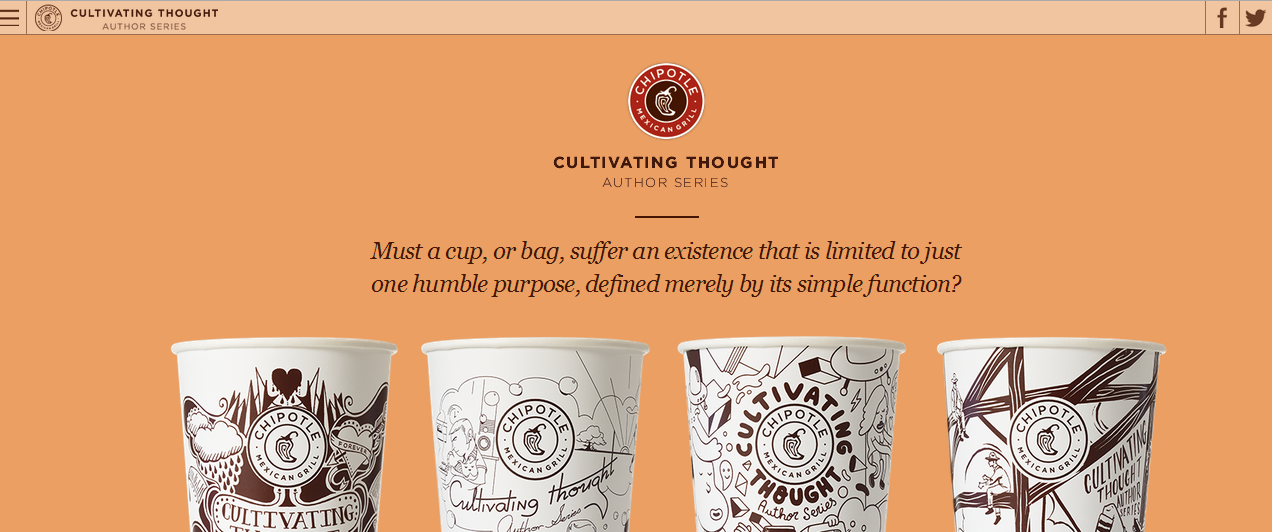As many marketers have pointed out, content marketing isn’t new. Brands have been doing it since they had access to large-scale printing and affordable distribution methods. Recall food labels with recipes printed on the back or home furnishing catalogs that contain tips for cleaning and upkeep. However, we’ve come a long way from the earliest examples like The Furrow, and companies like Chipotle are innovating ways to make interesting content a seamless part of the customer experience.
Want something to read with that?
In an exclusive interview with Vanity Fair, author Jonathan Safran Foer tells the story of how a boring burrito experience gave way to new content distribution campaign for the quick-service chain. Foer had neglected to bring a book or magazine with him to Chipotle and found he had nothing to look at while eating his meal.
“I really just wanted to die with frustration,” he told the source. “I said, ‘I bet a [lot]of people go into your restaurants every day, and I bet some of them have very similar experiences, and even if they didn’t have that negative experience, they could have a positive experience if they had access to some kind of interesting text.'”
Foer pitched an idea to CEO Steve Ells that would potentially save other customers from a similar situation, and now, the empty space on paper cups and takeout bags will be used for stories, essays and other interesting text. As the Cultivating Thought campaign launches, customers can enjoy reads from George Saunders, Toni Morrison, Malcolm Gladwell, Sarah Silverman and Foer himself.
Create added value with content marketing
Chipotle’s Cultivating Thought efforts are a great example of content marketing. Customers are getting more value out of their buying experiences without the company actually having to give them anything additional. The content published on the paper cups and to-go bags could give Chipotle the leading edge simply because customers enjoy having something to read while they eat, and provide even greater incentive to return if they enjoy the stories.
At a time when an estimated 90 percent (or more) of businesses say they use content marketing, it’s important to remember that not all messages need to be promotional in nature to drive bottom-line results. Marketers must think about the customers they’ve already acquired, and find ways to keep them engaged with content. Interesting news stories, helpful tips and insider insights can set the brand apart from competitors and give clients a reason to come back time and time again.






